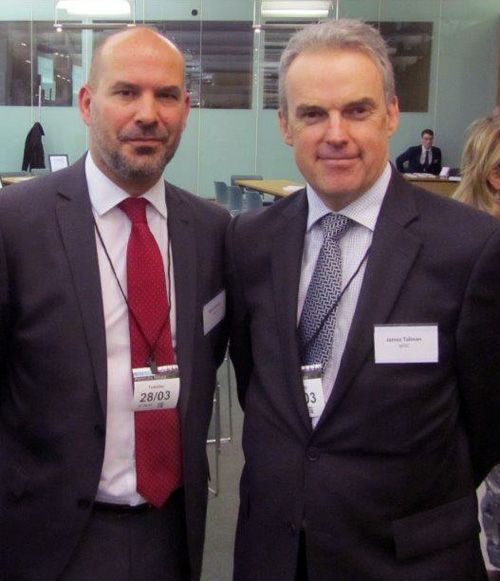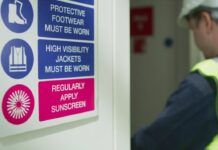
The roofing industry descended on Westminster this week (28th March) for an All Party Parliamentary Group (APPG) for Roofing Showcase Event. Organised by the National Federation of Roofing Contractors (NFRC), the purpose of the event was to re-invigorate interest in the APPG for the roofing industry, particularly amongst Members of Parliament, and to officially launch the Roofing Sector Workforce Development Strategy, a piece of research undertaken by the NFRC and other industry partners, which aims to assist the future development of the profession so that it can meet demand, provide strong training programmes and set an expected level of workmanship.
Some major themes running throughout the event included training, ensuring a supply of skilled workers, and maintaining best practice, all working towards an accreditation for the roofing sector. As James Talman, CEO of the NFRC explained to those assembled: “This is a sector prepared to get hold of itself – we aren’t after money, we want to get it right and need your support.”
With this in mind, a number of companies were on hand to give a demonstration of what the roofing sector has to offer in terms of innovative products and systems, as well as to highlight the prestigious and challenging projects which the sector works on every day. Dusty Gedge, president of the European Federation of Green Roof Associations, gave a talk on green roofs, outlining the GRO code of practice which is currently going through a review, and explaining that the sector has experienced a 17% growth between 2015 and 2016, but 42% of the market is in London due to the London Plan which dictates that green roofs should be designed for new developments where possible.
Richard Clews, pre-contracts manager at Prater, talked through some interesting projects which the company has been involved with, highlighting the difficult environments and planning which goes into working under challenging conditions, including working air-side on airport projects.
Mark Harris, head of technical services and operations at Radmat Building Products, focussed on blue roofs, a solution to tackle extreme rainfall in city centres which manages rainfall where it lands, helping to take the strain off the sewer systems.
Stephen Reynolds, national specifications manager at 2iM gave a talk on sustainability and innovation focusing on Envirolead, lead made from recycled batteries which is sold for manufacture into building materials. This highlighted the modern methods used in the manufacture of traditional materials which makes them attractive to architects and specifiers.
Simon Coleman, director of MJ Coleman & Sons, addressed the issues affecting the heritage roofing sector and explained the importance of preserving the knowledge and skills required to work on heritage projects.
All these presentations gave a very real representation of the great things which go on in the roofing sector every day, but as Mark Farmer, another speaker on the day and author of The Farmer Review, an independent review of the construction labour model, explained: “We need to be real about the world we live in – unique challenges are emerging that we haven’t had before” with regards to skills, recruitment and delivery of projects.
As mentioned earlier, the NFRC is already taking steps to address the problems the roofing sector is facing with regards to skills, recruitment and professionalising the sector. The research and conclusions from its Roofing Sector Workforce Development Strategy report point to three key objectives:
- Establish roofing as a professional, modern respected sector with clear career paths: able to attract the best and the brightest apprentices, students and new workers.
- Formalise and standardise a higher UK-wide training, accreditation and assessment infrastructure: to up-skill and multi-skill its growing workforce.
- Develop greater levels of proactive engagement with roofing sector companies, customers and suppliers: enabling growth, increased training, access to grants and higher standards.
The report points out the barriers to achieving these goals which include specialist skills in roofing not being recognised externally, the sector’s outdated recruitment methods stifling new talent, and training availability being scarce in some geographies. As the report explains: “The roofing sector recognises its own weaknesses and has embarked on its ambitious four-year Workforce Development Strategy to try and address those issues. Many of the actions and objectives required are things that the sector itself can and are taking the responsibility to improve themselves. There is, however, a limit to the changes and targets that can be achieved internally. To really make a difference and to empower the roofing sector to play its part in the government’s industrial strategy, it needs full government and private sector backing, support and engagement.”
Wednesday’s event was a step in the right direction to achieving this and the key now is to keep up the pressure and create a stronger, more professional roofing sector for the benefit of all stakeholders including contractors and manufacturers, as well as homeowners and building owners.



